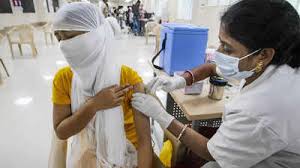India’s achievement is enormous — perhaps nowhere else in the world have so many people been vaccinated so quickly. Still, to reach the ultimate goal of full coverage, the number of shots needs to be almost doubled — not counting under-18s.
Unlike a few previous instances when record-breaking vaccinations were carried out to mark a special occasion, the milestone of 100-crore doses was crossed on a comparatively uneventful day. By the end of the day on Thursday, fewer than 80 lakh doses were administered. There have been about 20 occasions when at least this number of vaccines have been administered in a single day.
But that takes nothing away from the enormity of the achievement. This is the fastest rate of vaccination, not just in India, but possibly anywhere in the world. China has administered almost twice the number of doses to its citizens but it had also started out much earlier than anyone else. China had begun vaccinating its people in June last year, even before conducting phase III trials of its vaccines.
India, on the other hand, began only in mid-January, with a limited supply of vaccines that was put under further strain by the decision of the United States to clamp down on the export of raw materials. The shortage of vaccines was felt most acutely during the devastating second wave, the worst phase of the pandemic anywhere in the world.
The situation is, of course, drastically different now, with vaccines available mostly on demand and 50-60 lakh doses being administered on many days.
India also has to remain open to the possibility of providing booster doses from sometime next year. As of now, India looks all set to vaccinate about 70-80% of its adult population by the end of this year. But by that time, the group that received their vaccine in January and February might find its immunity waning. The discussion on booster doses in India — frequency, timing — is still to begin, but it is likely that the cycle of vaccinating everyone would repeat next year.
